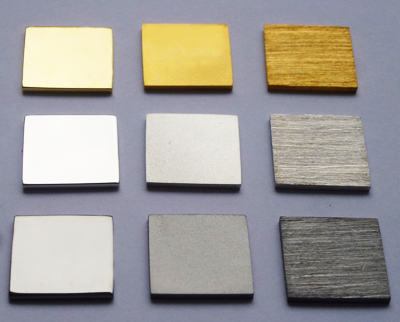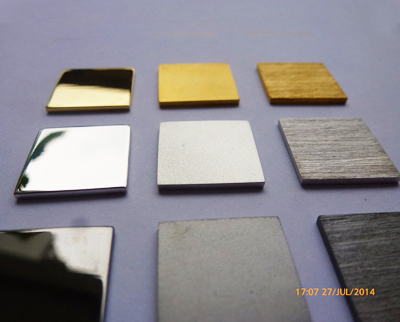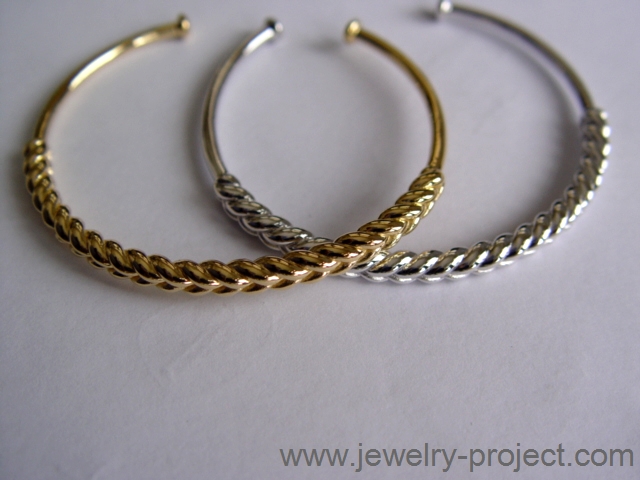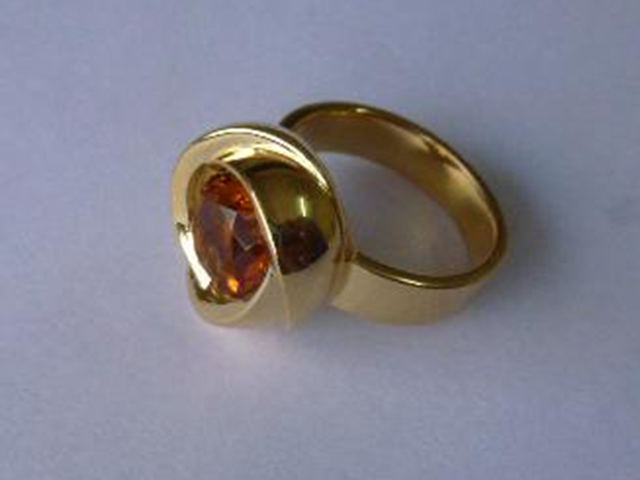PLATING ON SILVER JEWELRY
Anti-tarnish coating: This is a cheaper option opposed to rhodium plating. It is a coating that will protect the jewelry during transportation and storage. Nevertheless it will not resist a bath in hard water (shower or swimming pool). Appropriate for none oxidized sterling silver and we use it as a standard on all sterling silver jewelry unless otherwise specified when customer wishes to have aging/antique look sterling silver jewelry.
Rhodium plating:
Rhodium will protect silver jewelry from oxidation and provide a white chromium color as opposed to the off-white natural color of silver. Rhodium plating is an important part of the costs in making silver jewelry. On a large and flat piece it can represent up to 25% of the costs.
Ruthenium (black Rhodium):
Even black color plating, different aspect from oxidized silver. Can be Shiny or matt depending on the surface texture.
durable on silver if the jewelry is treated with care, otherwise scratches will reveal the color of the base metal underneath.
Gold plating (yellow or pink in various shades):
For the same reason we recommend a strong plating on silver base for a more durable gold plating on silver base. The electro-plating will inevitably wear off with time even if the jewelry is treated with care. Please refer to the links below this section for a durability guideline depending on plating thickness.
Our standards for quality and durability on silver :
- 1 micron: Pendants, Earrings
- 2 micron: Rings, Bracelets, small Bangles
- 3 microns: large silver bangles
PLATING ON GOLD or BRASS JEWELRY
Brass jewelry is not our main field of production but we accept high quality bras jewelry project where customers are ready to afford nice quality work on brass.
Silver plating :
For cheaper "silver look jewelry", can be oxidized to look like sterling silver. This is for cheap mass production of fashion jewelry. This is not our range of production.
Rhodium plating:
Can be used to provide a chromium finish to white gold jewelry, but can also help to mark and enhance white diamond pave sections on yellow gold jewelry. Rhodium is also used to bring a silver aspect to high quality range of fashion jewelry.
Ruthenium (black Rhodium):
Shiny or matt black color plating depending on the chosen texture of the surface. Black ruthenium is also used to help color matching gradient pave or to camouflage the prongs on micro-pave using black diamonds, black sapphires or other dark stones like blue sapphires and green Tsavorite garnet on white gold jewelry.
Gold plating (yellow or pink in various shades):
Brass is a better base than silver for gold electroplating because the base metal color (brass) is close to that of the plating color. Customers looking for economical solutions have the opportunity to risk a shallow plating, but by default our standards (and pricing) are set for durable plating quality.
Our standards for quality and durability on brass jewelry :
- 1 micron: Pendants, Earrings
- 1 micron or 2 micron: Rings, Bracelets, small Bangles (depends on customer price target)
- 1 microns or 2 micron: large bangles (depends on customer price target)
Electroplating :
1 to 5 microns thickness.Method using electricity passing through a bath containing ions of the desired metal plating. The electricity will pass the metal from its dissolved ion state on to the surface of the piece, in its solid state. The durability depends on the thickness.
(learn more...)
Gold-filled Jewelry :
5 to 30 microns thickness or more.Another alternative to electroplating finishes (Rhodium or gold) is the gold filled finish which is still cheaper than massive gold jewelry but more durable than electroplating where the gold layer does not exceed 3 to 5 µm.
The cost is type of plating is very much depending on the quantity of jewelry that will be plated in the same lot. It is not available for small productions (minimum 30 large pieces or 50-100 small pieces)
(learn more...)
"Vermeil jewelry" :
It is a standard that should have minimum 3-5 microns thickness plating. The real rule is that gold should represent 1/20 of the total jewelry weight. This is normally obtained using gold-filled technique, but electroplating of 3-5 microns is usually sufficient for light weight jewelry.
"Maintenance - How to keep and wear your plated jewelry" :
1. Do not spray on perfume or other sprays while wearing your gold plated jewelry. Wear your jewelry after you have sprayed on your favorite perfume so that chemicals on the spray or perfume does not interact with your jewelry’s metal. 2. Wait until your lotion or cream is dry or has been absorbed by your skin before you wear your gold plated ring, bracelet or necklace.
3. Substances like oil, nail polish, nail polish remover, perfume, chlorine from swimmingpool may react with plated jewelry and will cause it to tarnish easily. This also goes with sweat, so make sure you don’t forget to remove your gold plated jewelry when you exercise or anything that would require heavy physical work.
4. Do not go swimming with your plated jewelry. Sea (salt) or swimming-pool ( chlorine) can damage the plating. Also do not take shower or bath (shampoo, cream shower..) with your plated jewelry.
5. Our body chemistry also differs that is why some people’s jewelry may be more inclined to tarnish or tarnish more quickly than other individuals.
6. Every after use, clean your plated jewelry with a cotton ball or a very soft cloth to remove any dust and dirt it has acquired. Gently rubbing the surface of your gold plated jewelry using a soft jewelry cloth also helps restore shine.
7. If your jewelry needs more cleaning you may clean it with warm, soapy water. Soak it for a few minutes and you may clean it with a soft brush. Stay away from jewelry cleaners and antibacterial soaps which may have certain components that will just make your gold plated jewelry tarnish more quickly.
8. To avoid scratches, wrap your jewelry in a soft cloth after cleaning or keep it in a jewelry box separate from other types of jewelry you have. Avoid wearing it at the beach as sans would create scratches and expose the inner metal
9. Try to keep your plated jewelry in a dry place or in an airtight bag or box when stored for a long period.
10. Now this being said all is not lost. There are techniques to revive your rusted/tarnished gold plated silver jewelry. Starting from soap, then toothpaste, but if it started to turn black in some areas then you can polish gently (might remove gold in corner), or do a re-plating.
External link: https://www.onecklace.com/tips/tips-on-caring-for-your-gold-plated-jewelry/
Useful Links about Jewelry and Gemology
CLIMATE AND ENERGY (english subtitle)
must see!!!
Laboratories & schools
www.aigslaboratory.com(A.I.G.S. Laboratory)
www.gia.edu
GIA)
www.gemresearch.ch
(GRS)
www.igiworldwide.com
(IGI)
www.ssef.ch
(SSEF)
www.gubelinlab.com
(Gubelin)
Knowledge
www.fieldgemology.org/Field trips in the mines
http://webmineral.com
About minerals
www.ruby-sapphire.com
The best seller
www.mindat.org
Mineral database
www.themelis.com
Another famous gemologist
http://gemme.la.rca.fr
Blog gemmology and opals
beyond4cs.com
Free gemology courses and resources
www.hubs.com/
3D Printing, CNC machining, injection molding and sheet metal services (FDM, SLS, SLA & MJF).
Forums & Networks
www.gemologyonline.comThe rendez-vous gemology
www.geminterest.com
French equivalent
www.pricescope.com
All about prices
www.diamondse.info
Mostly about prices
http://polygon.net/
All about everything
www.ganoksin.com
All about everything
Associations
www.thaigemjewelry.or.th(TGJTA)
www.gemstone.org
(ICA)
www.agta.org
(AGTA)
www.gemsociety.org
(IGS)







